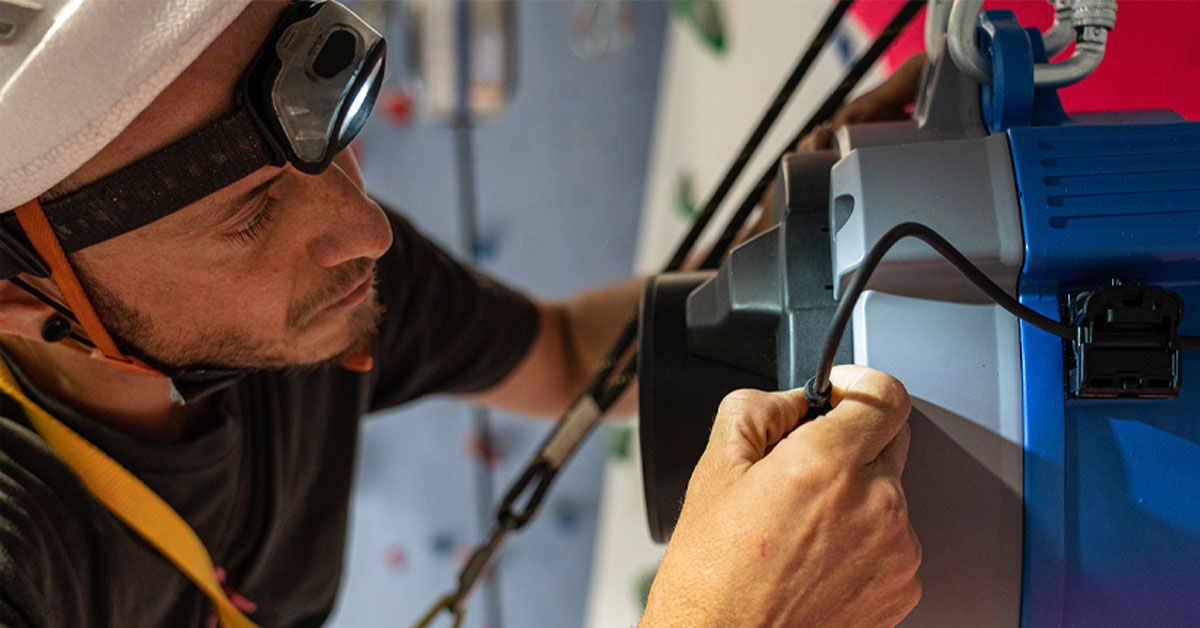Phase 2
Strength Sessions
Specific strength and power are required in climbing when executing the cruxes of routes or hard boulder problems. The main emphasis is on the fingers, arms and core. The routines in your plan will target your goals, strengths and weaknesses. Session plans contain advice on how to perform each routine.
Introduction to Strength Training

Safety Notes
- A thorough warm-up is crucial. Warm-up plans are provided.
- Be aware of form when training.
- Don’t attempt a session if feeling overly stressed or fatigued. Rest or do an easier, endurance-based session instead.
- In project sessions, be wary of trying the same move repeatedly for too long. Alternate between different moves when working a project. Be prepared to call time and move on, even if you feel close.Certain holds and moves represent a higher potential risk for injuries, eg: sharp pockets, ‘micro-edges’ slopers (if slapping the same one repeatedly) or shoulder-intense moves such as press-moves when the arms are spread wide. Don’t avoid these holds or moves but treat them with caution: ease into the move by testing the load, don’t work the move for too long. Be ready to let go suddenly.
Technique Tips
Refine your beta — Try out different sequences, make every attempt to grip handholds the best way and try alternative foot-sequences.
Dynamic movement — Focus on generating momentum (eg more push from the feet or swing from the hips).
Gripping — Experiment with different methods of gripping the holds, half-crimp, full-crimp, open, use of the thumb etc.
Accuracy — Practice catching holds first time, in exactly the right place during dynamic moves.
Core tension — Practice tensing your core and pressing your toes into small footholds.
‘Front-on versus side-on’ — Sometimes it’s better to twist in and use the outside edge of your foot or drop-knee and other times it’s better to climb with hips parallel. Try out both options.
Mind Drills for Strength Exercises
- Use visualisation in your rest periods. Imagine yourself powering up the route in control. Imagine how each hold feels, the friction on your skin the tension in your muscles and tendons, the pressure you put on your feet etc. Don’t imagine it being too easy – it should feel hard but you still do it!
- Belief – a route problem can feel impossible when you’re failing on it, and we’re often too quick to tell ourselves we’re not strong enough. Then a micro-adjustment to the beta will unlock things. Keep an open mind. You can do it!
- Body language – hold your head up and talk to yourself positively in a way that makes you feel strong and confident.
Need A Plan?
Start training today with a free Training on Auto Belay with Neil Gresham 6-week training plan.
Strength Training Videos
How to Project on Auto Belay
Some climbers are unsure how to go about working a project on auto belay, or even if it’s possible to do so. But it is, and in this video Neil explains the method. Better still, if you’re climbing at a gym that’s got a TRUBLUE iQ+, you can program it for different lengths of time so you can rest on the rope, work out your sequence, chalk up, and give the move another go.
Practicing Lead Climbing on Auto Belay
One of the differences with climbing an auto belay is that you’re going to be moving at a continuous pace, whereas when you’re leading you need to stop and clip quick draws. And clearly this is something that requires practice. You can easily simulate clipping when climbing an auto belay simply by pausing every second or third move.
Focus on Footwork
Footwork is usually one of the first aspects of climbing technique to deteriorate when we start to get pumped. Yet when we see pro climbers in action, somehow they always manage to hold it together and maintain good form even when they’re super tired. This is one of the best things to practice when you’re climbing on auto belay.
RESOURCES

Follow Us
Follow Head Rush Technologies UK to keep up with the latest TRUBLUE news.

How Auto Belays Work
Learn more about the innovative technology behind your favorite auto belays.

Next Steps
Take your training to the next level with a custom plan from Neil Gresham.
